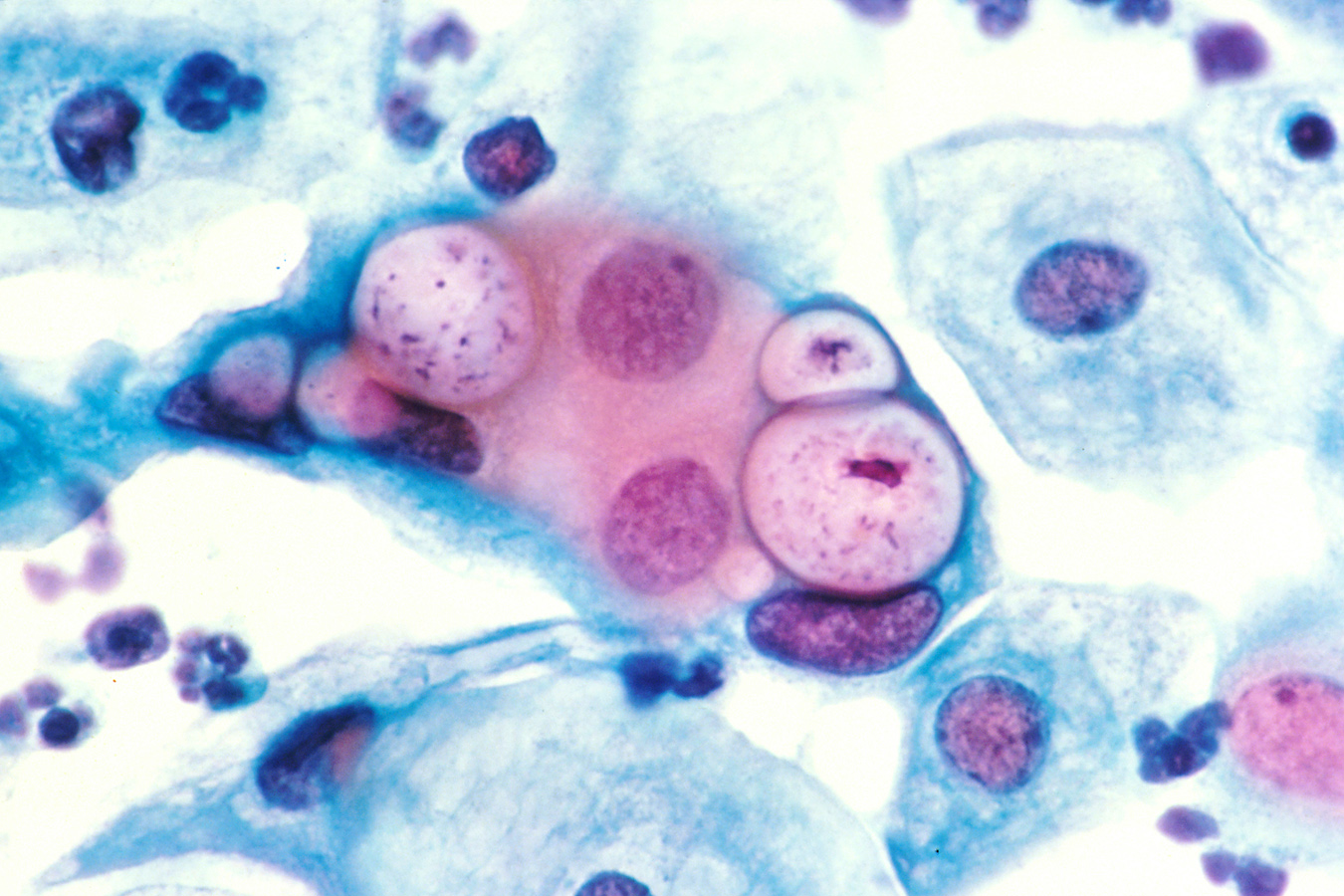Playlist
Show Playlist
Hide Playlist
Chlamydia
00:01 Chlamydia, a bacteria. 00:03 The Chlamydia are very small, obligate intracellular bacteria and you can see the slide in front of you. 00:12 They lack a peptidoglycan layer, a typical cell wall which means that there is no target for a beta-lactam antibiotic to attach to. 00:22 Remember that beta-lactam antibiotics bind to peptidoglycan in the cell wall otherwise known as the penicillin binding protein. 00:31 However, Chlamydia is without that. 00:33 It has several different morphological forms which we’ll discuss a bit further when we talk about its growth pattern. 00:40 The elementary body which is the extracellular infectious form and which is resistant to many mechanisms, both immunologic and antibiotic and then, the reticulate body which is a intracellular form when it is in its replicative or a replicating stage and at this point, it is dependent on its host cell to survive. 01:04 We think of three distinct pathogens in the Chlamydia family, Chlamydia trachomatis which is the most overt cause and it causes sexually transmitted infections principally. 01:17 Chlamydia psittaci which also has been named Parrot Fever and it is almost exclusively bird-associated but humans can get disease too, and then, Chlamydia pneumoniae which can cause an atypical pneumonia. 01:33 Let’s start with the growth cycle of Chlamydia and this is specific looking at trachomatis although other Chlamydia grow this way as well. 01:42 We start with the free formed elementary body which attaches to its target cell. 01:49 And at this case, we might think of this as a genital epithelium. 01:53 After it binds, it is then ingested by the cell or in fact, it gains entry into it entering via a phagosome and as it converts or as it enters that cell within the phagosome, it starts to convert from the elementary body form to the reticulate body form. 02:14 Then, it starts to replicate and as it does, so, it creates this cluster of the reticular body forms called an inclusion body. 02:24 This is one of the few times if one were to stain by iodine the cell that one could actually see under the microscope naked eye, evidence of Chlamydia trachomatis infection. 02:36 Ultimately, after the replication progress has occurred, then, the reticulate bodies converted back to elementary bodies ready to be dissolved into the free flowing community and then they extrude or release themselves into the serum, into their local area and prepare to go infect their next target. 03:00 So, it’s an ongoing cycle in which the Chlamydia itself changes its form depending on whether it’s intra or extracellular. 03:09 Looking then in comparison at the three distinct Chlamydia species that we’ll talk further about, the host range for all three does include humans but for trachomatis and pneumoniae, it’s principally only humans that will actually develop some sort of infection with the organism. 03:29 Chlamydia psittaci as you see in the middle primarily affects animals and especially birds but there can be accidental infection of humans especially if they’re associated with parrot care. 03:42 As I briefly mentioned in the previous slide, the iodine staining of inclusion bodies most demonstrates presence of Chlamydia trachomatis only at the inclusion body stain but is not sensitive for looking for the other forms of Chlamydia psittaci and pneumoniae. 04:00 And then, in terms of antibiotic or specifically sulfonamide susceptibility, only the Chlamydia trachomatis is truly sensitive, the other forms are resistant. 04:10 Diseases, here’s where things are even further divergent. 04:15 Chlamydia trachomatis exists in further subtypes which you see there, types A to C which are associated with trachoma, types L1 to L3 which are associated with lymphogranuloma venereum and types D to K which are associated with even further sexually transmitted diseases, also including infantile pneumonia and conjunctivitis which is acquired by the infant during passage through the birth canal. 04:43 Chlamydia psittaci is the cause of psittacosis or parrot fever as mentioned and Chlamydia pneumoniae is the cause of typically sinopulmonary infections such as pharyngitis, bronchitis, deeper pneumonia, and sinusitis. 05:00 The transmission of each is also somewhat divergent. 05:03 Chlamydia trachomatis as you’re starting to get the sense is sexually transmitted either through direct contact with partners, contact with bodily infected fluids, or by infants as they’re delivered through the birth canal. 05:19 Chlamydia psittaci is transmitted via inhalation of dry bird feces. 05:23 The classic exposure history is a human being if they get infected who’s changing the newspapers at the bottom of the parrot cage and in fact, you might add this to your arsenal of interesting and unusual questions to ask in the exposure history. 05:39 Chlamydia pneumoniae then like many other respiratory bacterial and even viral pathogens is transmitted via inhalation of fine aerosols, fine or small respiratory droplets from the infected person.
About the Lecture
The lecture Chlamydia by Sean Elliott, MD is from the course Bacteria.
Included Quiz Questions
Which of the following features describe the elementary body form of Chlamydia?
- Extracellular, infectious, and resistant
- Extracellular, infectious, and nonresistant
- Intracellular, infectious, and resistant
- Extracellular, noninfectious, and resistant
- Intracellular, noninfectious, and nonresistant
Inclusion bodies of Chlamydia trachomatis can be seen by which stain?
- Iodine stain
- PAS stain
- Romanowsky stain
- Gram stain
- Silver stain
Chlamydia trachomatis can be differentiated from other forms of Chlamydia on the basis of sensitivity to which antibiotic?
- Sulfonamides
- Penicillin
- Macrolides
- Tetracyclines
- Aminoglycosides
Customer reviews
5,0 of 5 stars
| 5 Stars |
|
5 |
| 4 Stars |
|
0 |
| 3 Stars |
|
0 |
| 2 Stars |
|
0 |
| 1 Star |
|
0 |




